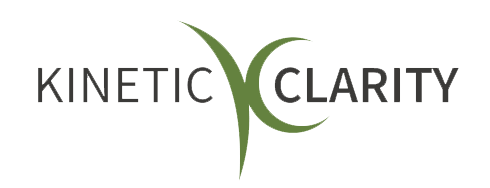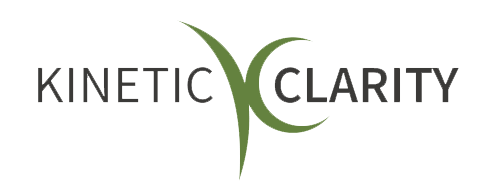What Does Healthy Employee Wellbeing Look Like?
And why should your organization care?

As an employer, it's essential to prioritize the wellbeing of your employees. But what does employee wellbeing actually look like? You might have heard the phrase, "you know it when you see it," but it's essential to understand that employee wellbeing goes beyond physical health. It includes an individual's mental, emotional, and social state as well.
So, how can you spot healthy and happy employees? If your organization has been active in encouraging work-life balance to promote positive relationships among coworkers, you’ve likely spotted many of the signs already. By investing in your employees' health and happiness, you don’t only improve their quality of life but also boost their productivity and engagement at work.
Why Should Organizations Care About Employee Wellbeing?
Employee wellbeing is crucial to the success of any organization. Research shows that employees who experience high levels of wellbeing in the workplace are three times more likely to recommend their employer to others. Word of mouth is one of the most effective ways to hire exceptional talent; the more highly your company is spoken of as an employer, the more likely high-quality candidates will seek you out.
On the other hand, when employees' health suffers, it has ripple effects throughout the company, resulting in decreased productivity; this means lost money for the business. So employee wellbeing is more than just a personal issue - it's an organizational one. Poor employee wellbeing can lead to absenteeism, presenteeism, and decreased morale. It’s no coincidence that the Quiet Quitting phenomenon began in the midst of a pandemic; many people were suffering from the effects of a changing culture.
Of course, physical health is also a significant component of wellbeing, and companies see the effects of low employee wellness via increased healthcare costs. But investing in a wellness program will pay off. For example, 72% of organizations lowered their healthcare costs after introducing a wellness program.
All of this ultimately affects the company's bottom line.
Common Barriers to Workplace Wellbeing
Despite the importance of employee wellbeing, many organizations struggle to create a supportive environment that fosters their employees' health and happiness. There are several common barriers that organizations may face when trying to prioritize employee wellbeing.
- Burnout – Burnout comes from excessive workloads, unrealistic deadlines, and long working hours.
- Lack of employee interest and awareness – Employees may not prioritize their wellbeing if they do not see its value or if they do not have the knowledge or skills to manage their wellbeing effectively.
- Cost – Implementing wellbeing programs and initiatives can be costly, and some organizations may hesitate to invest in them.
- Time constraints – Employees may not have the time to prioritize their wellbeing if they are constantly busy with work.
- Poor leadership – Leaders who don’t prioritize employee wellbeing or create a toxic work environment can negatively impact employee health and happiness.
- Not enough investment in relationship skills – Healthy relationships at work are essential to employee wellbeing, but some employees may lack the skills required to build and maintain positive relationships.
Companies can overcome each of these roadblocks with the help of senior sponsorship. Breaking down these barriers needs to come from the top down. Wellbeing should be modeled at all levels.
How to Spot a Healthy Work Culture
Spotting a healthy work culture that positively affects employee wellbeing can be challenging, as it encompasses several aspects of an employee's life, including physical, mental, and emotional health. However, several key signs can help organizations identify when their employees are thriving and when they may need additional support.
Courageous Leadership
One of the most critical signs of employee wellbeing is the presence of courageous and empathetic leaders. When leaders are compassionate and create a culture of psychological safety, employees feel more comfortable sharing their thoughts and feelings, leading to a healthy communication and feedback cycle. This then turns into employees experiencing increased engagement and satisfaction.
Manageable Workload
Another important marker of employee wellbeing is reasonable workloads. Excessive workloads can lead to burnout, negatively impacting an employee's mental and physical health. It leaves employees feeling that their jobs are a tremendous burden.
But when employees have a manageable workload, they are more likely to feel satisfied with their job and less stressed. Employers can effectively manage employee workloads by prioritizing what needs attention now versus what can wait. Communicating clear priorities can be immensely effective, and frequent check-ins can keep all players on track.
Fewer Missed Days
Low rates of absenteeism can also be a sign of employee wellbeing. Employees are less likely to call in sick or take time off work when they are healthy and happy. Conversely, high absenteeism rates can signify that employees are struggling with physical or mental health issues. Absenteeism directly impacts personal productivity.
But it also impacts the entire team. Co-workers often need to scramble to cover for their missing colleague, which begins a negative cycle that can lead to burnout spread. The employees taking on the extra work created by a missing worker is
29.5 less productive overall.
Career Training
Career development and goal achievement are important indicators of employee wellbeing. When employees have clear career goals and opportunities for development, it demonstrates they feel engaged and motivated.
Employees concerned about their advancement and taking advantage of career development opportunities are thinking about progress within the organization. They have plans for the future and are willing to put effort into their work to make growth.
Healthy Communication
A healthy, transparent dialog between employees and leadership is crucial for employee wellbeing. When employees feel comfortable sharing their thoughts and concerns with their leaders, it can lead to increased trust and a more supportive work environment.
Conversely, back-channeling can lead to a toxic work environment and decreased employee wellbeing. In addition, it leads to a lack of trust between employees and leadership, which sets up unhealthy relationships.
Employee Enthusiasm
Finally, enthusiasm for the organization can be an indicator of employee wellbeing. When employees feel proud to work for their organization, companies can enjoy the retention of top talent.
An enthusiastic employee is a motivated employee. Passionate employees are likelier to go above and beyond their job responsibilities, contribute new ideas, and advocate for the organization.
Enthusiasm is contagious and can help build a strong employment brand for the organization. The best, most effective reviews come from people who have first-hand experience with a company.
Wrapping Up
Several key signs can help organizations spot employee wellbeing. Organizations can create a supportive work environment that fosters employee health and happiness by focusing on these indicators. To get there, a company must overcome the most common hurdles that can make some organizations give up on pursuing total employee wellbeing.












